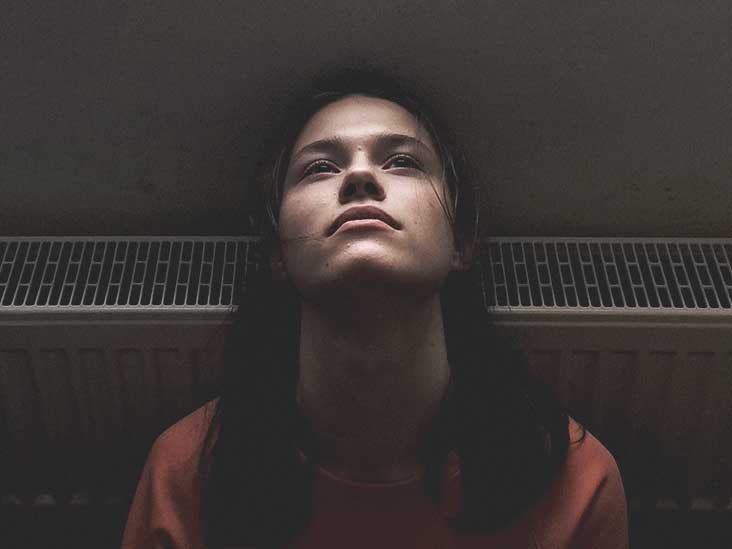What’s Bipolar?
Bipolar disorder is a mental illness marked by extreme mood swings from high to low, and from low to high. Highs are periods of mania, while lows are periods of depression. The mood swings may even become mixed, so you might feel elated and depressed at the same time.
Bipolar disorder isn’t a rare diagnosis. A 2005 study found that 2.6 percent of the U.S. population, or more than 5 million people, are living with some form of bipolar disorder. Symptoms tend to appear in a person’s late teens or early adult years, but they can occur in children as well. Women are more likely to receive bipolar diagnoses than men, though the reason for this remains unclear.
Bipolar disorder can be hard to diagnose, but there are warning signs or symptoms that you can look for.
What are the warning signs of bipolar disorder?
The signs and symptoms of bipolar disorder are varied. Many of these symptoms can also be caused by other conditions, making this condition hard to diagnose.
The warning signs of bipolar disorder can generally be divided into those for mania, and those for depression.
7 signs of mania
Mania can cause other symptoms as well, but seven of the key signs of this phase of bipolar disorder are:
- feeling overly happy or “high” for long periods of time
- having a decreased need for sleep
- talking very fast, often with racing thoughts
- feeling extremely restless or impulsive
- becoming easily distracted
- having overconfidence in your abilities
- engaging in risky behavior, such as having impulsive sex, gambling with life savings, or going on big spending sprees
7 signs of depression
Like mania, depression can cause other symptoms as well, but here are seven of the key signs of depression from bipolar disorder:
- feeling sad or hopeless for long periods of time
- withdrawing from friends and family
- losing interest in activities that you once enjoyed
- having a significant change in appetite
- feeling severe fatigue or lack of energy
- having problems with memory, concentration, and decision making
- thinking about or attempting suicide, or having a preoccupation with death
Suicide prevention
If you think someone is at immediate risk of self-harm or hurting another person:
- Call 911 or your local emergency number.
- Stay with the person until help arrives.
- Remove any guns, knives, medications, or other things that may cause harm.
- Listen — but don’t judge, argue, threaten, or yell.
If you think someone is considering suicide:
- Get help from a crisis or suicide prevention hotline. Try the National Suicide Prevention Lifeline at 800-273-8255.
Sources: National Suicide Prevention Lifeline and the Substance Abuse and Mental Health Services Administration.
Bipolar disorder types and symptoms
There are four common types of bipolar disorder, but two of these types are most often diagnosed.
Bipolar I
This classic form of bipolar disorder used to be called “manic depression.” In bipolar I, manic phases are clear. The person’s behavior and moods are extreme, and their behavior quickly escalates until they’re out of control. The person may end up in the emergency room if left untreated.
To have bipolar I, a person must have manic episodes. In order for an event to be considered a manic episode, it must:
- include moods or behaviors that are unlike the person’s usual behavior
- be present most of the day, nearly every day during the episode
- last at least one week, or be so extreme that the person needs immediate hospital care
People with bipolar I typically have depressive episodes as well, but a depressive episode isn’t required to make the bipolar I diagnosis.
Bipolar II
Bipolar II is considered more common than bipolar I. It also involves depressive symptoms, but its manic symptoms are much less severe and are called hypomanic symptoms. Hypomania often becomes worse without treatment, and the person can become severely manic or depressed.
Bipolar II is harder for people to see in themselves, and it’s often up to friends or loved ones to encourage someone with this type to get help.
Rarer types of bipolar disorder
There are two other types of the disorder that are less common than bipolar I and II. Cyclothymic disorder involves mood swings and shifts similar to bipolar I and II, but the shifts are often less dramatic in nature. A person with cyclothymic disorder can often function normally without medication, though it may be hard. Over time, a person’s mood swings may develop into a diagnosis of bipolar I or II.
Bipolar disorder not otherwise specified is a general category for a person who only has some bipolar symptoms. These symptoms are not enough to make a diagnosis of one of the other three types.
What bipolar disorder feels like
Hear from real people who live with bipolar disorder.

While bipolar disorder can be difficult to diagnose, once it’s identified, it can be treated.
Bipolar diagnosis
Unless you have severe mania, the symptoms of bipolar disorder can be hard to spot. People who have hypomania may feel more energized than usual, more confident and full of ideas, and able to get by on less sleep. These are things that hardly anyone complains about.
You’re more likely to seek help if you’re depressed, but your doctor may not observe the manic side then. Learn how bipolar disorder is diagnosed.
Bipolar treatment
Once you have a diagnosis, your doctor will decide on a treatment program that works best for you. Bipolar treatment may include:
- medication
- behavioral therapy
- substance abuse treatment
- electroconvulsive therapy
A licensed psychiatrist usually manages your treatment. You may also have a social worker, psychologist, or psychiatric nurse practitioner involved in your care. Learn more about treatments for bipolar disorder.





